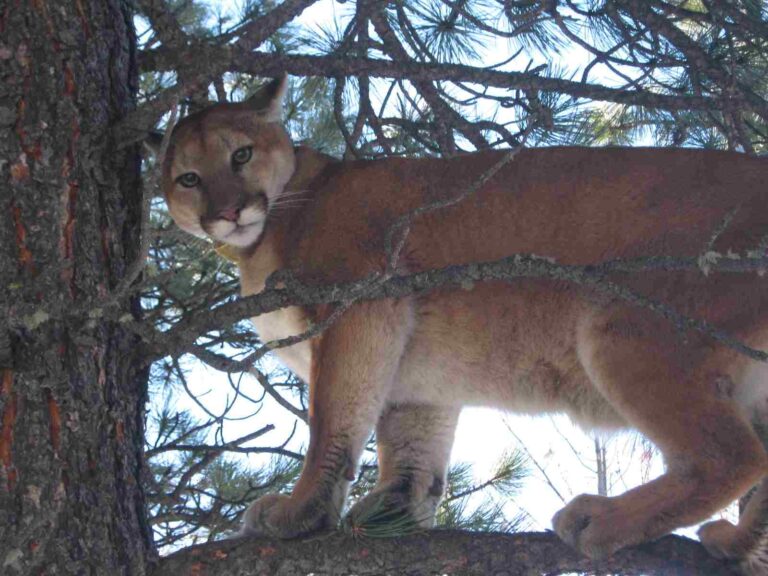Hamster Vs Gerbil Size, Weight, Overall Comparison
When choosing between hamsters and gerbils as potential pets, recognizing key differences in size, appearance, and characteristics can assist in making an informed decision based on personal preferences and lifestyle. The better pet between a hamster and a gerbil depends on the preferences of the prospective owner.
I. Physical Characteristics:
– Hamsters are recognized by their short and stubby tails, while gerbils boast longer tails, extending up to 4 inches. Notably, facial features differ, with gerbils having long, pointy faces akin to mice, and hamsters having short and wide faces. Hamsters often appear chubbier due to cheek pouches for food storage.
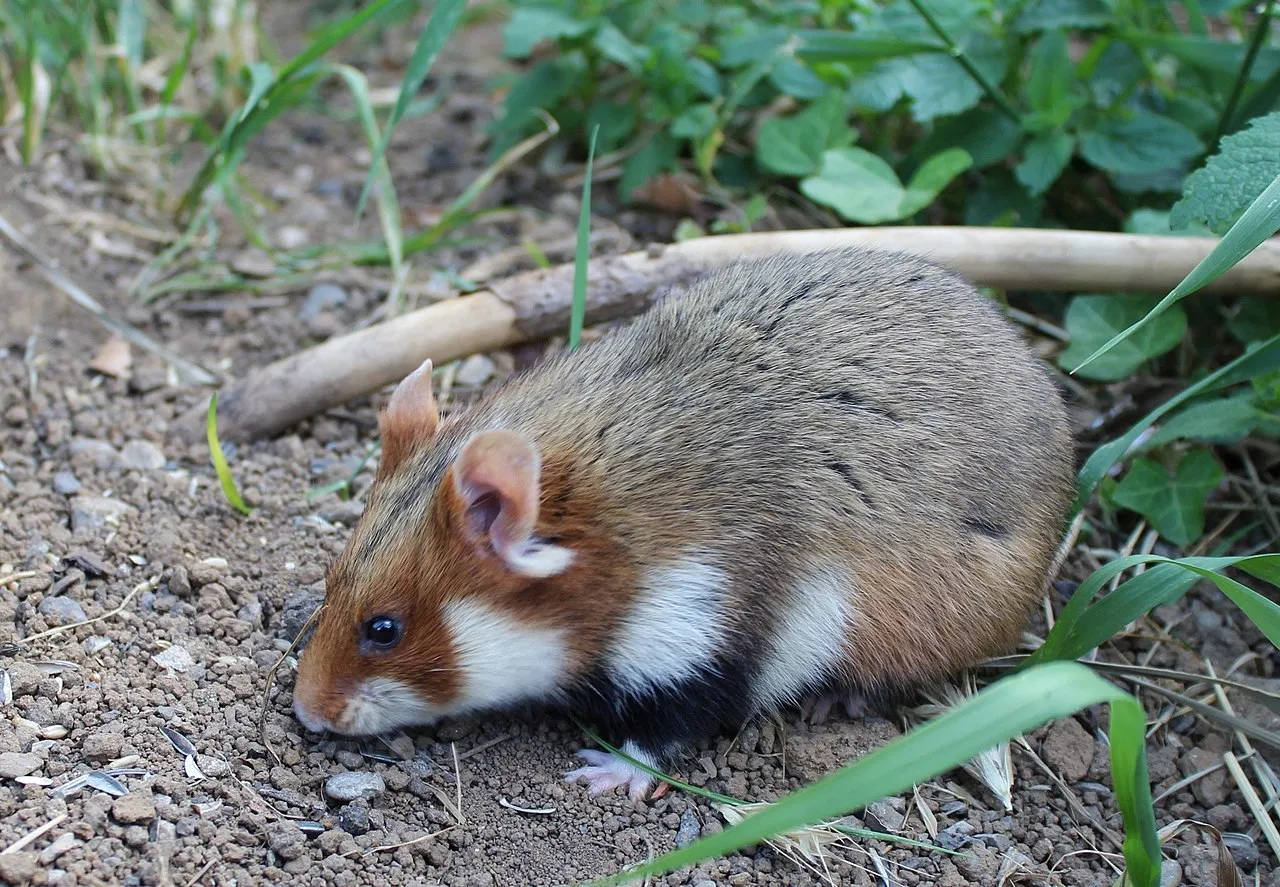
II. Behavioral Traits:
– Gerbils typically exhibit more curiosity and sociability once accustomed to their owners, making them more interactive and entertaining. Hamsters, while cute, may be less active and engaging. Understanding these behavioral aspects aids in choosing a pet that aligns with the desired level of interaction.
III. Lifespan:
– Gerbils generally have a longer lifespan, ranging from three to eight years, compared to hamsters, which typically live two to five years. Considering the commitment to a pet’s lifespan is crucial for prospective owners.
IV. Maintenance and Care:
– Daily maintenance varies between the two species. Hamsters tend to be more self-sufficient, preferring foraging and exploring, while gerbils require access to plenty of enrichment opportunities. Considering the time and effort available for daily care is essential for a harmonious pet-owner relationship.
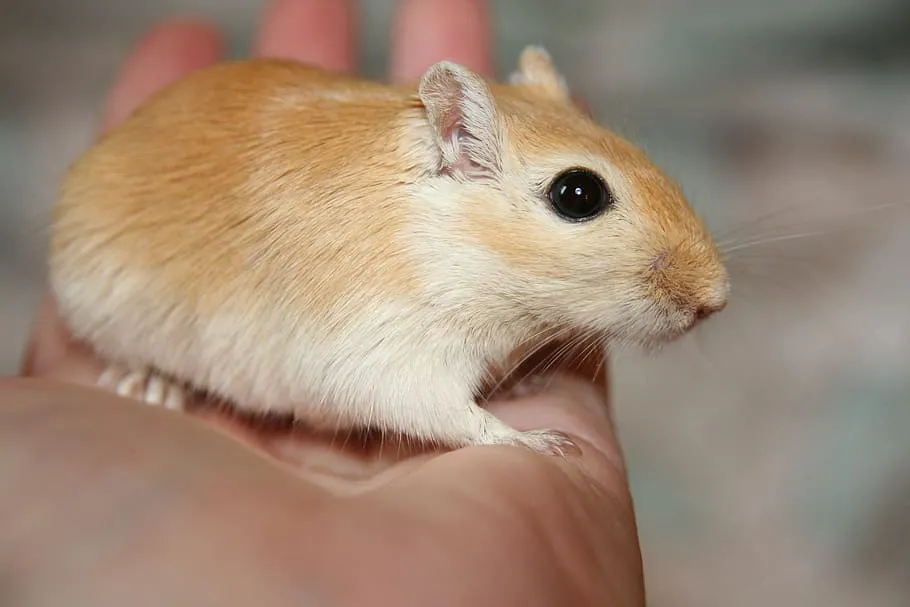
V. Solitary vs. Social:
– Hamsters are often solitary animals, whereas gerbils are social creatures that thrive in pairs or groups. This distinction in social behavior influences the choice of having a single pet or considering companionship for a more interactive experience.
VI. Space and Housing:
– Gerbils may require more space due to their active nature and social tendencies. Ensuring proper housing that accommodates their need for exploration and interaction contributes to the overall well-being of the pet.
*Details of Comparison
| Criteria | Hamster | Gerbil |
| Taxonomy | Order: Rodentia, Family: Cricetidae, Genus: Mesocricetus, Species: Varies |
Order: Rodentia, Family: Muridae, Subfamily: Gerbillinae, Genus: Gerbillus, Species: Varies
|
| Appearance | Stout, short tail, large cheek pouches, varied fur colors |
Sleek, long tail, pointed snout, agouti fur coloration
|
| Size | Typically 5 to 7 inches (excluding tail) |
Generally smaller, around 4 to 6 inches (excluding tail)
|
| Weight | 4 to 7 ounces | 2 to 4 ounces |
| Dentition and Bite Force (PSI) | Incisors continuously grow, moderate bite force |
Continuously growing incisors, relatively lower bite force
|
| Physical Offensive Advantages | Strong cheek pouches |
Sharp claws, agile limbs for digging
|
| Physical Defensive Advantages | Curl into a ball, use cheek pouches for protection |
Quick and agile movements, adept at escaping
|
| Speed | Around 4 to 5 mph | Up to 10 mph |
| Agility | Agile climbers and burrowers |
Exceptionally agile, especially in burrows
|
| Senses | Well-developed smell and hearing, poor eyesight |
Acute hearing, keen smell, adapted to low light
|
| Overall Physical Capacity | Adaptable climbers and burrowers |
Specialized diggers, swift agility
|
| Habitat Preference(s) and Geographic Region | Varied habitats including grasslands and deserts |
Arid regions, sandy deserts
|
| Tracks | Four toes on front and five on hind feet |
Four toes on both front and hind feet
|
| Lifespan | 2 to 3 years in captivity |
3 to 4 years in captivity
|
| Mode of Feeding | Omnivores, seeds, fruits, insects |
Omnivores, seeds, grains, some insects
|
| Intelligence | Limited problem-solving, instinctive |
Higher problem-solving skills, social intelligence
|
| Social Behavior | Mostly solitary, aggressive |
Highly social, live in groups
|
| Mode of Reproduction | Simple mating, gestation around 15 to 20 days |
Complex reproductive behaviors, gestation around 24 days
|
| Parental Behavior | Limited parental care |
Cooperative care from both parents
|
| Proximity to Human-Inhabited Areas | Both kept as pets, adaptable to captivity |
Both kept as pets, adaptable to captivity
|
| Behavior Toward Humans | Varied, can be docile or territorial |
Generally more sociable and curious
|
| Danger Posed to Humans | Minimal danger, may bite if provoked or mishandled |
Low risk, bites uncommon, usually when threatened
|
| Associated Precautions | Handling with care, providing suitable living conditions |
Handling with care, providing suitable living conditions
|
| Conservation Status | Varies by species, some face threats |
Generally not a major focus, some species locally threatened
|
Key Points
- Gerbils are generally smaller and lighter than hamsters.
- Hamsters have stronger cheek pouches, while gerbils excel in digging with sharp claws.
- Gerbils are faster runners and more agile compared to hamsters.
- Hamsters have a broader habitat range, while gerbils are often associated with arid environments.
- Gerbils tend to live slightly longer than hamsters on average.
- Gerbils exhibit higher problem-solving skills and social intelligence.
- Gerbils are highly social, living in groups, while hamsters are mostly solitary.
- Gerbils have a more complex reproductive process with cooperative parental care.
- Both are kept as pets but gerbils are generally more sociable and curious.
- Conservation status varies among different hamster and gerbil species.
1. Taxonomy
Hamster:
Order: Rodentia
Family: Cricetidae
Genus: Mesocricetus (for Syrian hamsters)
Species: Varies (e.g., Mesocricetus auratus for Syrian hamsters)
Gerbil:
Order: Rodentia
Family: Muridae
Subfamily: Gerbillinae
Genus: Gerbillus (for Mongolian gerbils)
Species: Varies (e.g., Gerbillus perpallidus for Mongolian gerbils)
2. Appearance
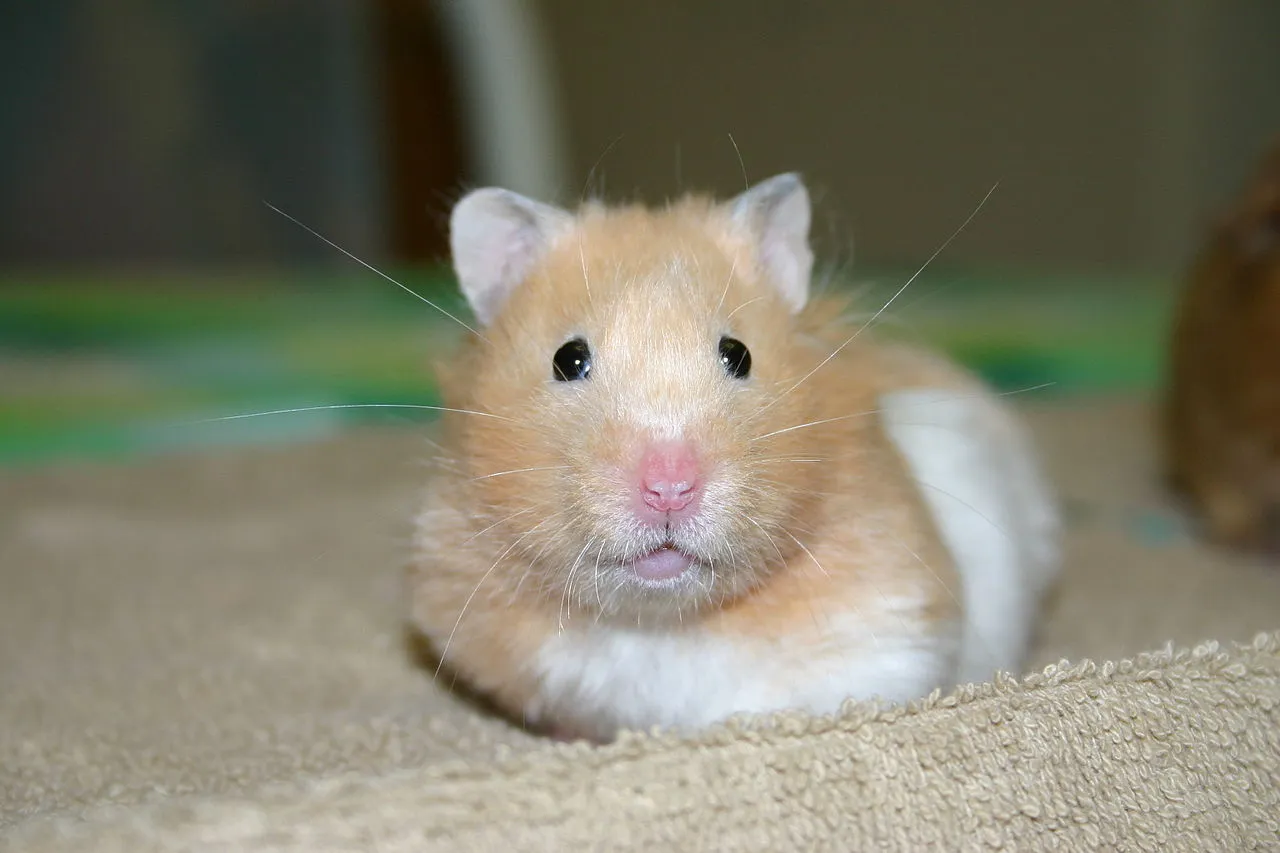
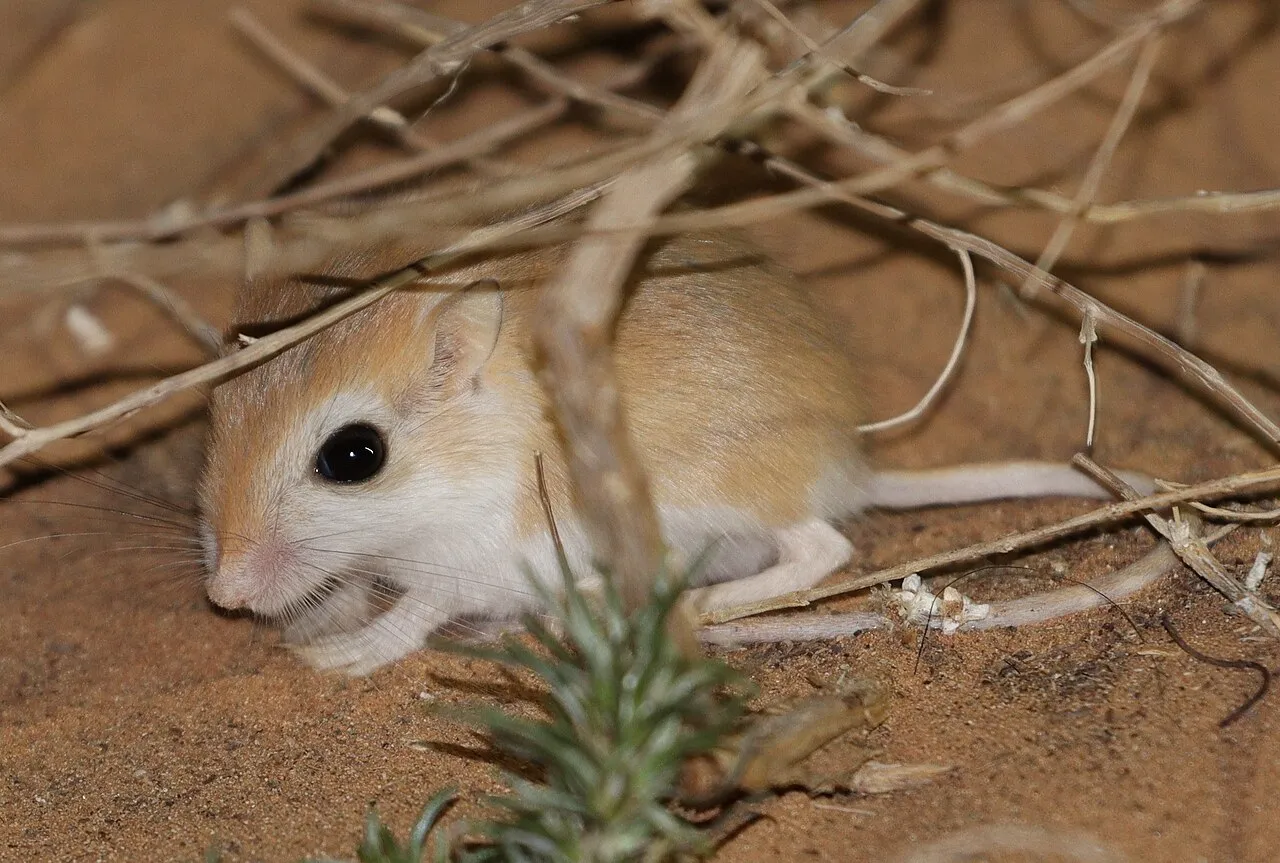
Hamster:
Typically stout, with a short tail and large cheek pouches.
Fur coloration varies among species; common colors include brown, grey, and white.
Gerbil:
Sleek, with a long tail, large eyes, and a pointed snout.
Fur coloration is typically agouti, with a mix of sandy, cream, and grey shades.
Comparison:
Hamsters are generally more compact, while gerbils have a more elongated appearance.
Gerbils have a distinctive long tail compared to the shorter tail of hamsters.
Ecological Implications:
Hamsters’ stout build may provide advantages in burrowing and navigating tight spaces.
Gerbils’ sleek design may aid in swift movement and agility, potentially facilitating evasion from predators.
3. Size
Hamster:
Length varies by species, but most are around 5 to 7 inches (12 to 18 cm) excluding the tail.
Gerbil:
Generally smaller than hamsters, with a length ranging from 4 to 6 inches (10 to 15 cm) excluding the tail.
Comparison:
Hamsters are usually slightly larger in overall size compared to gerbils.
Ecological Implications:
Size differences may influence resource utilization and competition for nesting sites in their respective habitats.
4. Weight
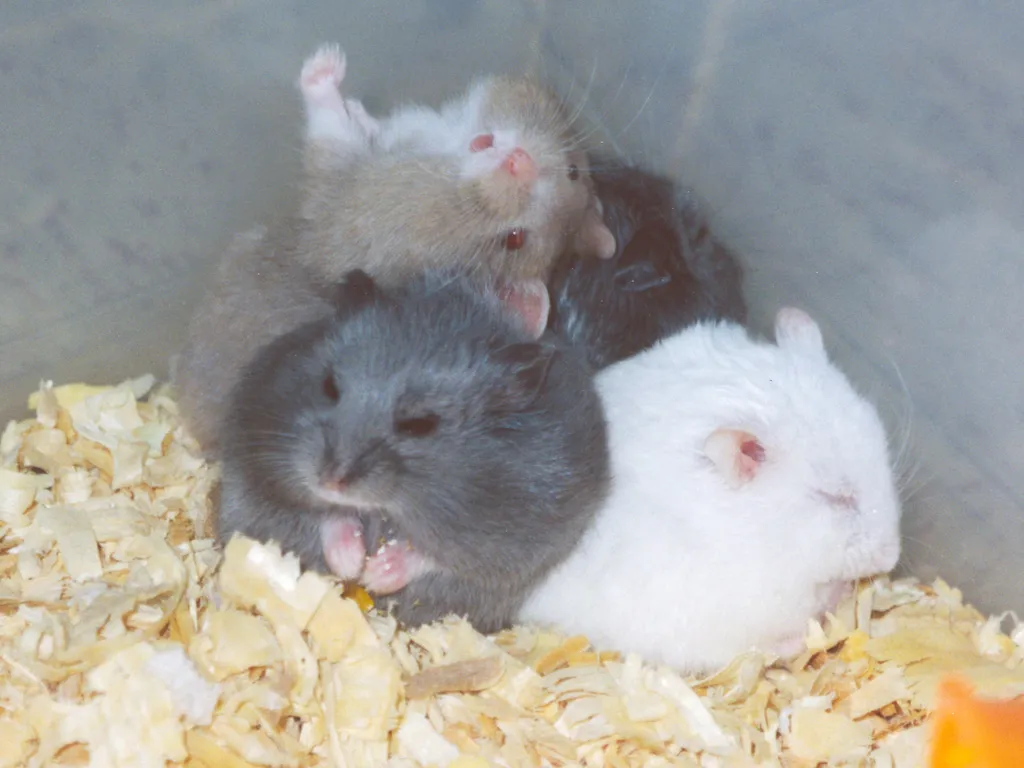
Hamster:
Weights vary by species, but most hamsters weigh between 4 to 7 ounces (110 to 200 grams).
Gerbil:
Lighter than hamsters, with weights typically ranging from 2 to 4 ounces (60 to 110 grams).
Comparison:
Hamsters generally have a higher average weight compared to gerbils.
Ecological Implications:
Weight influences energy requirements, foraging patterns, and susceptibility to predation.
5. Dentition and Bite Force (PSI)
Hamster:
Incisors continuously grow, adapted for gnawing; bite force is moderate.
Gerbil:
Similar dental adaptation with continuously growing incisors; bite force is relatively lower.
Comparison:
Both exhibit rodent-typical dental features, but hamsters may have a slightly stronger bite.
Ecological Implications:
Dental adaptations reflect their omnivorous diets and their need to process various food sources in their habitats.
6. Physical Offensive Advantages
Hamster:
Strong cheek pouches for storing and transporting food.
Gerbil:
Sharp claws and agile limbs for effective digging and burrowing.
Comparison:
Hamsters’ pouches provide a unique advantage in food storage, while gerbils excel in digging.
Ecological Implications:
Hamsters’ pouches aid in efficient food collection and storage, contributing to their survival in variable food environments. Gerbils’ digging abilities are crucial for creating burrows and finding shelter.
7. Physical Defensive Advantages
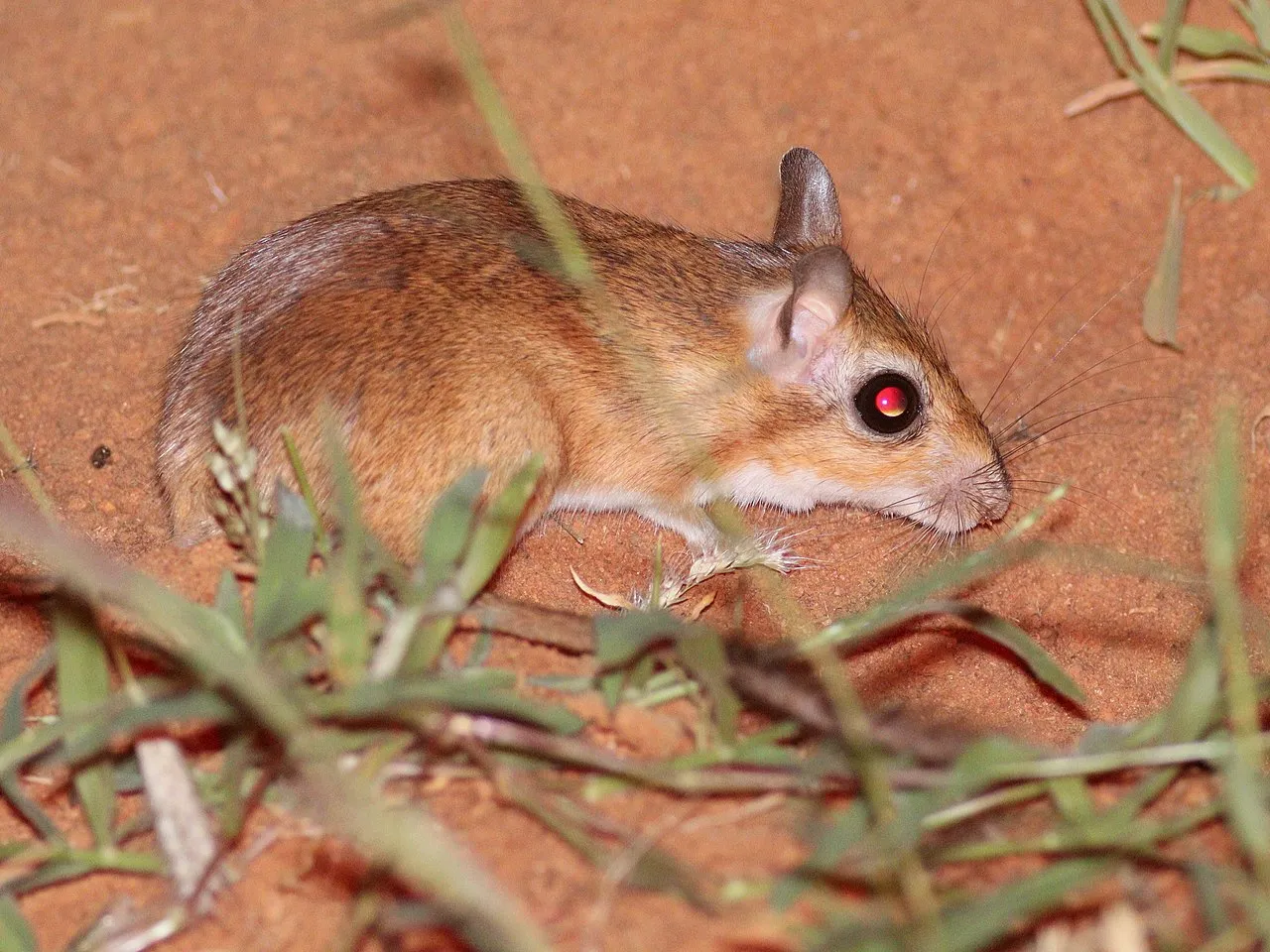
Hamster:
Ability to curl into a ball and use cheek pouches for protection.
Gerbil:
Quick and agile movements, adept at escaping through intricate burrow systems.
Comparison:
Hamsters rely on defensive postures, while gerbils prioritize swift evasion.
Ecological Implications:
These defensive adaptations enhance survival chances in different environments; hamsters may deter predators with their protective stance, while gerbils’ agility aids in evading threats.
8. Speed (Km/hour or Mile/hour)
Hamster:
Moderate speed, around 4 to 5 mph (6 to 8 km/h).
Gerbil:
Faster runners, capable of reaching speeds up to 10 mph (16 km/h).
Comparison:
Gerbils are generally faster runners compared to hamsters.
Ecological Implications:
Speed is a critical factor in predator avoidance and efficient foraging, influencing their ability to escape threats or catch prey.
9. Agility
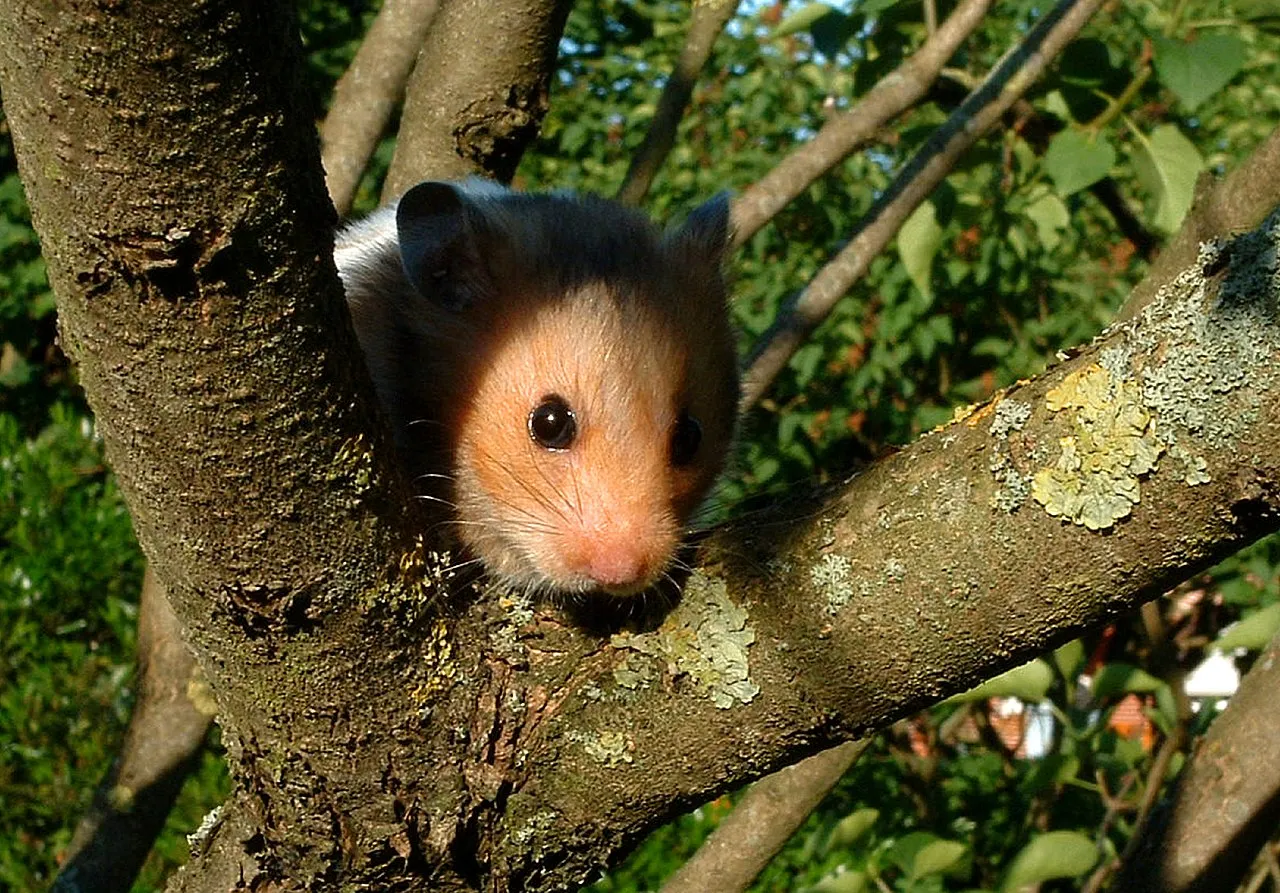
Hamster:
Agile climbers and burrowers, utilizing their body shape for maneuvering in confined spaces.
Gerbil:
Exceptional agility, especially in navigating complex burrow systems.
Comparison:
Gerbils often exhibit higher agility due to their body structure and lifestyle.
Ecological Implications:
Agility is crucial for accessing resources, escaping predators, and establishing secure burrows, each contributing to their ecological roles and survival strategies.
10. Senses
Hamster:
Well-developed sense of smell and hearing; relatively poor eyesight, especially in bright light.
Gerbil:
Acute sense of hearing and a keen sense of smell; eyesight is adapted to low light conditions.
Comparison:
Both rely heavily on smell and hearing, with gerbils having better low-light vision.
Ecological Implications:
Enhanced senses contribute to their ability to detect predators, locate food, and communicate within their environments.
11. Overall Physical Capacity
Hamster:
Adaptable climbers and burrowers with strong pouches for food storage.
Gerbil:
Specialized diggers with swift agility and sharp claws; adept at escaping predators.
Comparison:
Hamsters showcase versatility in climbing and burrowing, while gerbils excel in digging and evading.
Ecological Implications:
Their physical capacities are tuned to their specific ecological niches, influencing their interactions with the environment.
12. Habitat Preference(s) and Geographic Region
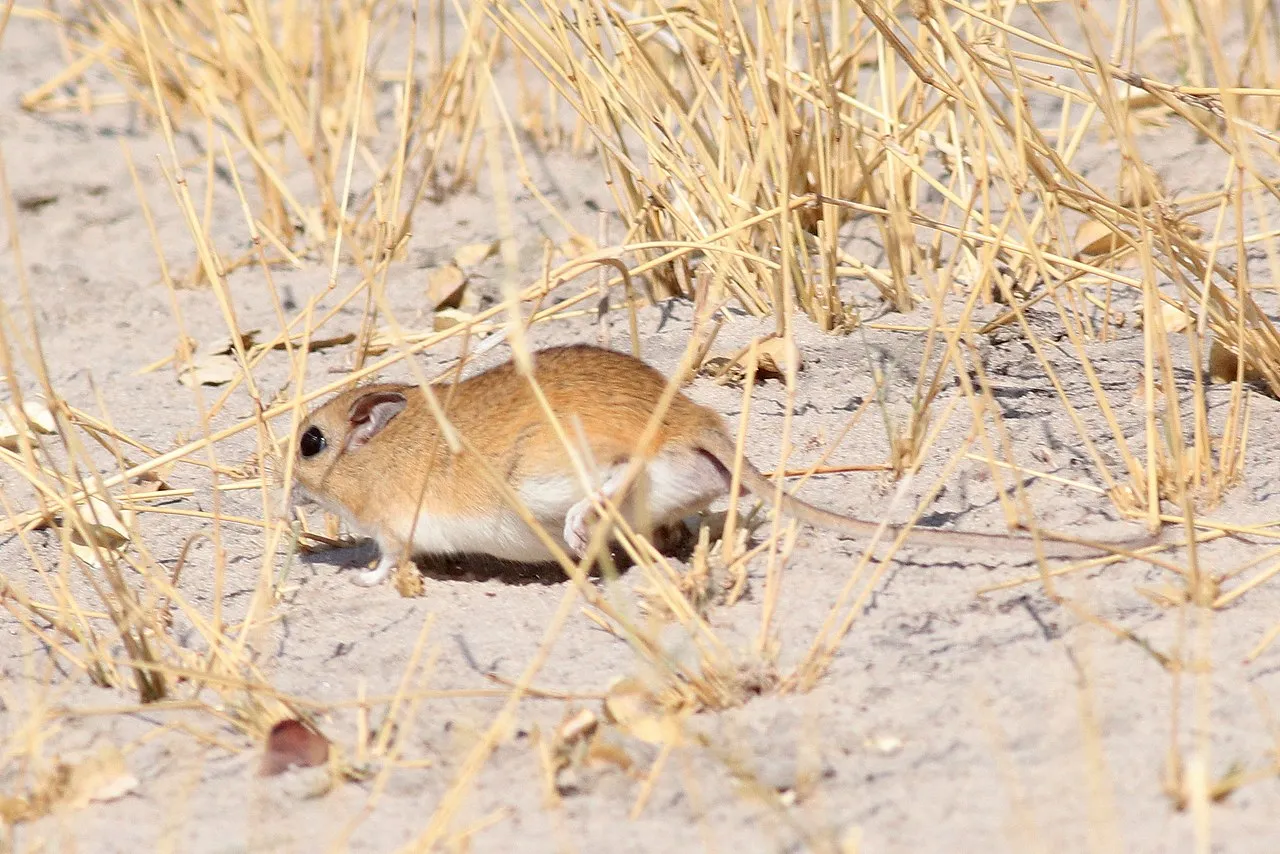
Hamster:
Varied habitats, including burrows in grasslands, deserts, and agricultural areas.
Gerbil:
Arid regions, favoring sandy deserts and grasslands with loose soil for burrowing.
Comparison:
Hamsters display a broader habitat range, while gerbils are often associated with arid environments.
Ecological Implications:
Habitat preferences impact their roles in ecosystems and their adaptations to specific environmental conditions.
13. Tracks
Hamster:
Leave distinct tracks, often showing a pattern of four toes on the front feet and five on the hind feet.
Gerbil:
Tracks typically reveal a pattern of four toes on both front and hind feet.
Comparison:
Both exhibit recognizable track patterns, with minor variations.
Ecological Implications:
Tracking allows researchers to study their movements and behavior in the wild, contributing to ecological research and conservation efforts.
14. Lifespan
Hamster:
Typically live around 2 to 3 years in captivity, with shorter lifespans in the wild.
Gerbil:
Generally have a slightly longer lifespan, ranging from 3 to 4 years in captivity.
Comparison:
Gerbils tend to live slightly longer than hamsters on average.
Ecological Implications:
Lifespan impacts reproductive strategies, population dynamics, and ecological roles within their respective habitats.
15. Mode of Feeding
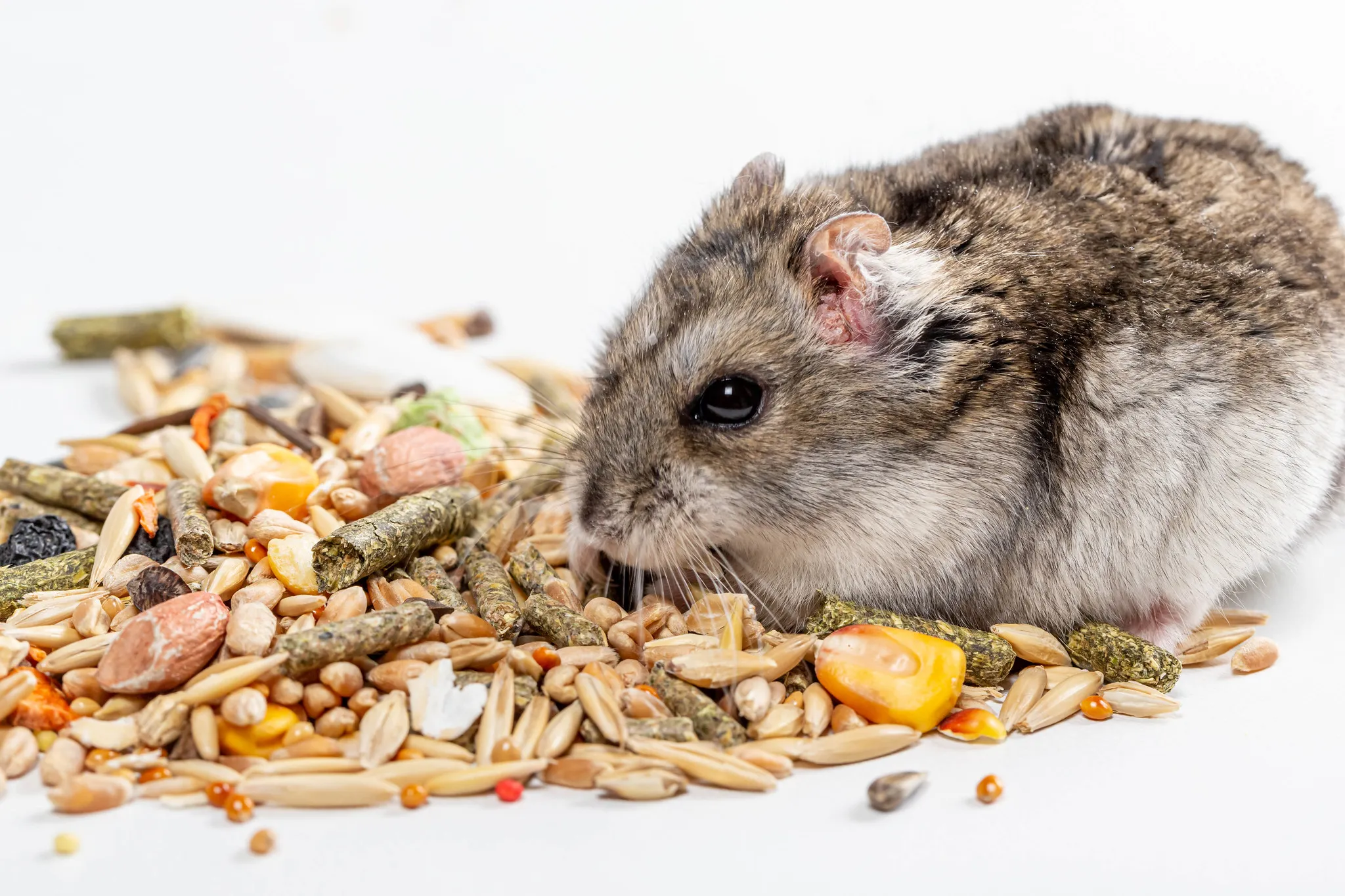
Hamster:
Omnivores with a diet consisting of seeds, fruits, insects, and vegetation.
Gerbil:
Omnivores, primarily consuming seeds, grains, and some insects.
Comparison:
Both share an omnivorous diet with slight variations in specific food preferences.
Ecological Implications:
Dietary preferences influence their impact on local flora and fauna, as well as their interactions with other species in their ecosystems.
16. Intelligence
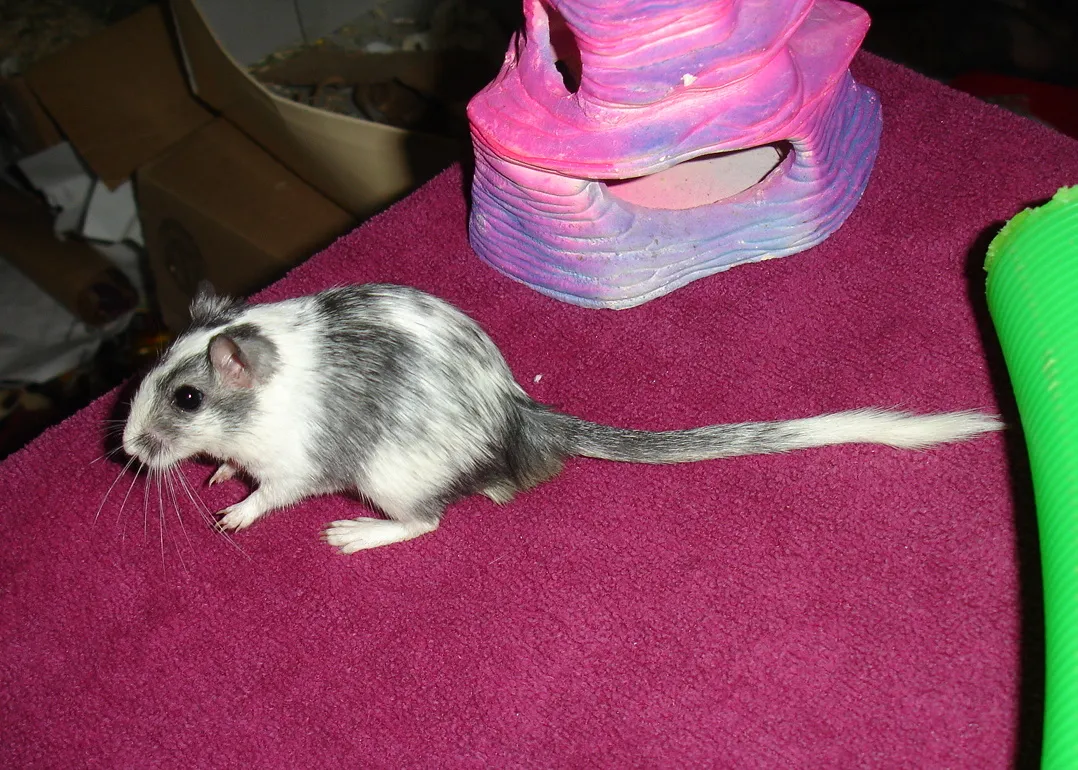
Hamster:
Limited problem-solving abilities; known for instinctive behaviors.
Gerbil:
Exhibits higher problem-solving skills and social intelligence.
Comparison:
Gerbils generally demonstrate higher cognitive abilities compared to hamsters.
Ecological Implications:
Intelligence influences adaptation to environmental changes, foraging strategies, and social interactions within their habitats.
17. Social Behavior
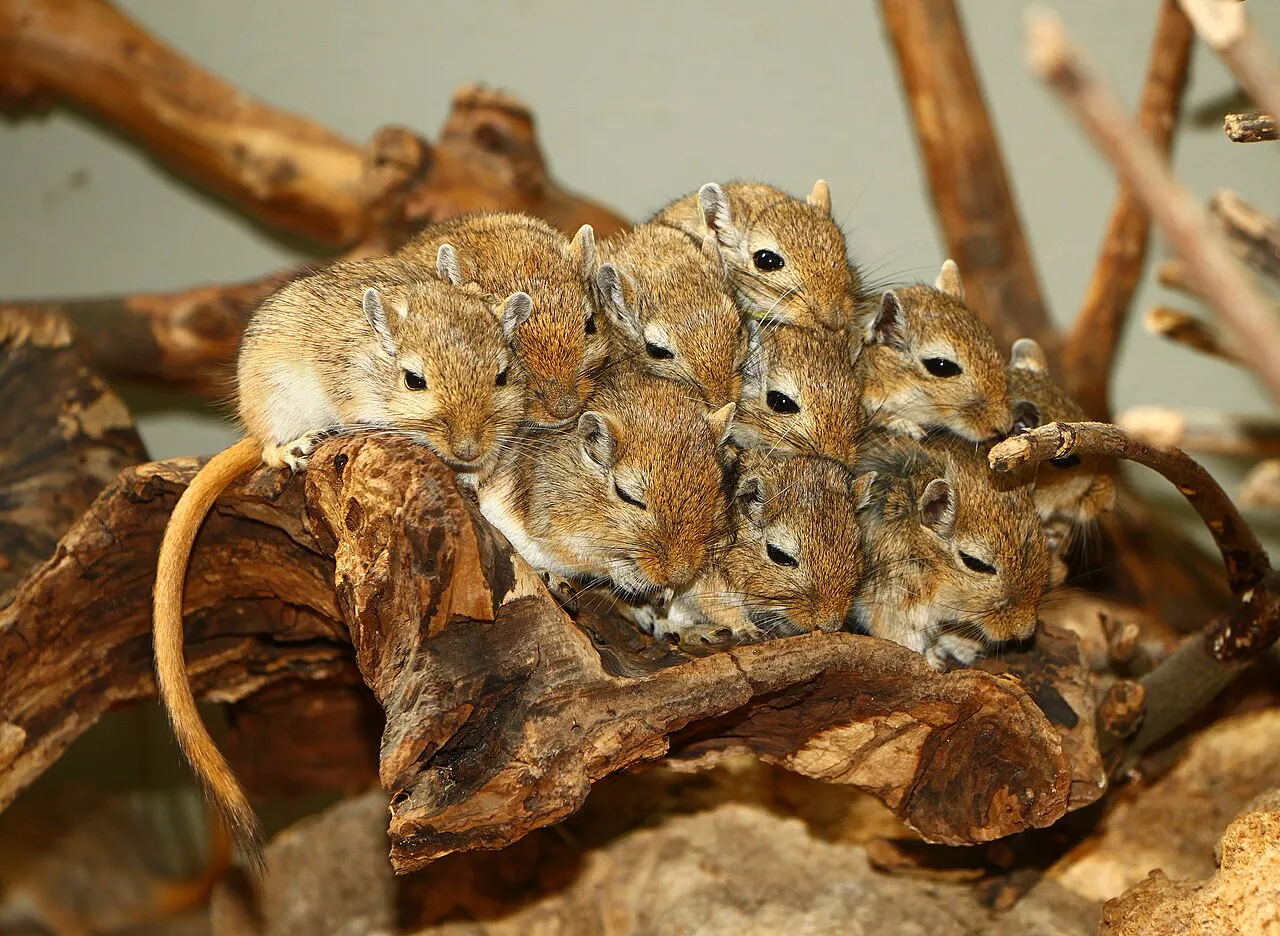
Hamster:
Mostly solitary, aggressive toward conspecifics; exceptions for short-term mating.
Gerbil:
Highly social, thrive in groups known as clans or colonies.
Comparison:
Gerbils are notably more social and cooperative compared to the more solitary hamsters.
Ecological Implications:
Social behavior affects resource utilization, reproductive strategies, and predator avoidance in their respective habitats.
18. Mode of Reproduction
Hamster:
Generally reproduce through simple mating; gestation period lasts around 15 to 20 days.
Gerbil:
More complex reproductive behaviors, with a longer gestation period of approximately 24 days.
Comparison:
Gerbils have a more intricate reproductive process compared to hamsters.
Ecological Implications:
Differences in reproductive strategies influence population dynamics and adaptation to environmental conditions.
19. Parental Behavior
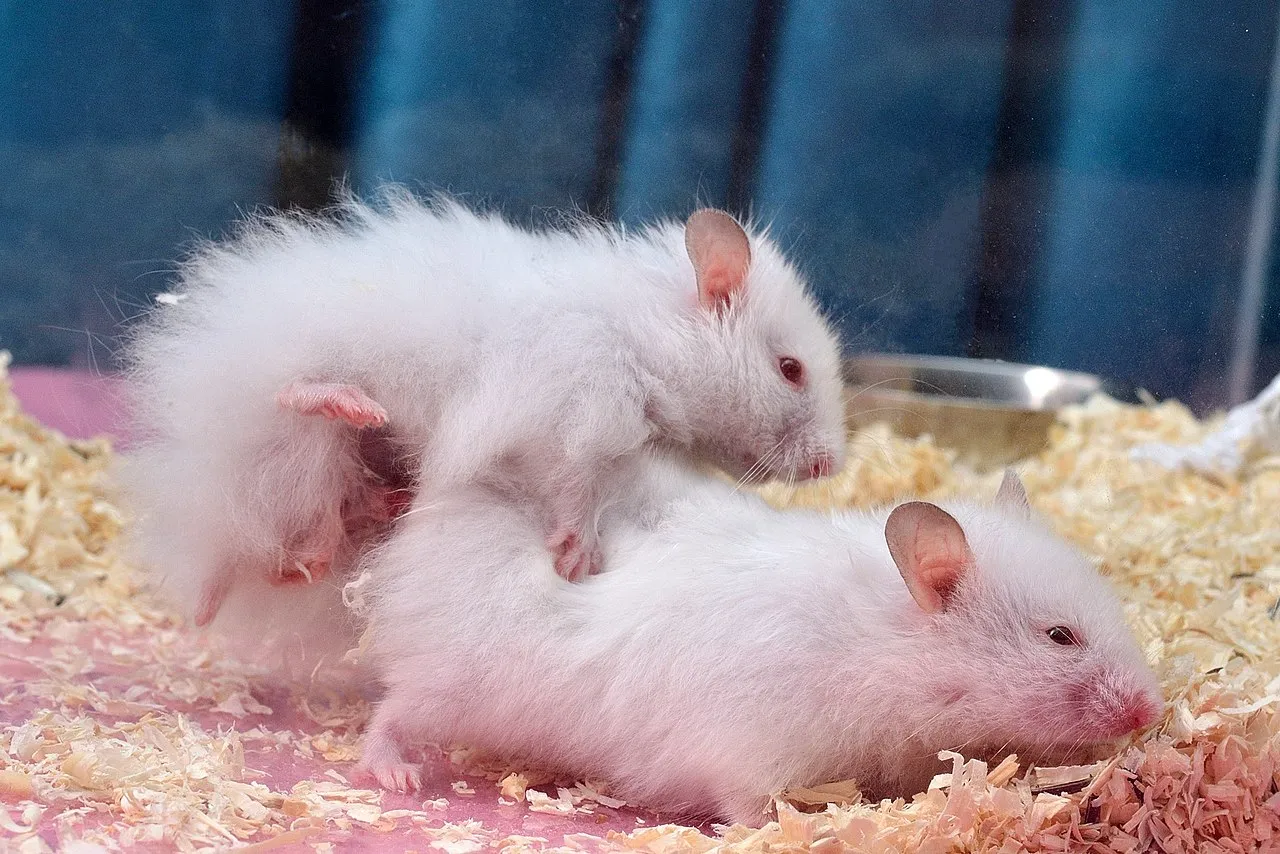
Hamster:
Limited parental care; mothers care for the pups but may become aggressive if disturbed.
Gerbil:
Both parents participate in caring for the young, exhibiting cooperative breeding behaviors.
Comparison:
Gerbils demonstrate more extensive parental cooperation than hamsters.
Ecological Implications:
Cooperative parental care enhances the survival chances of offspring, impacting population dynamics in their habitats.
20. Proximity to Human-Inhabited Areas
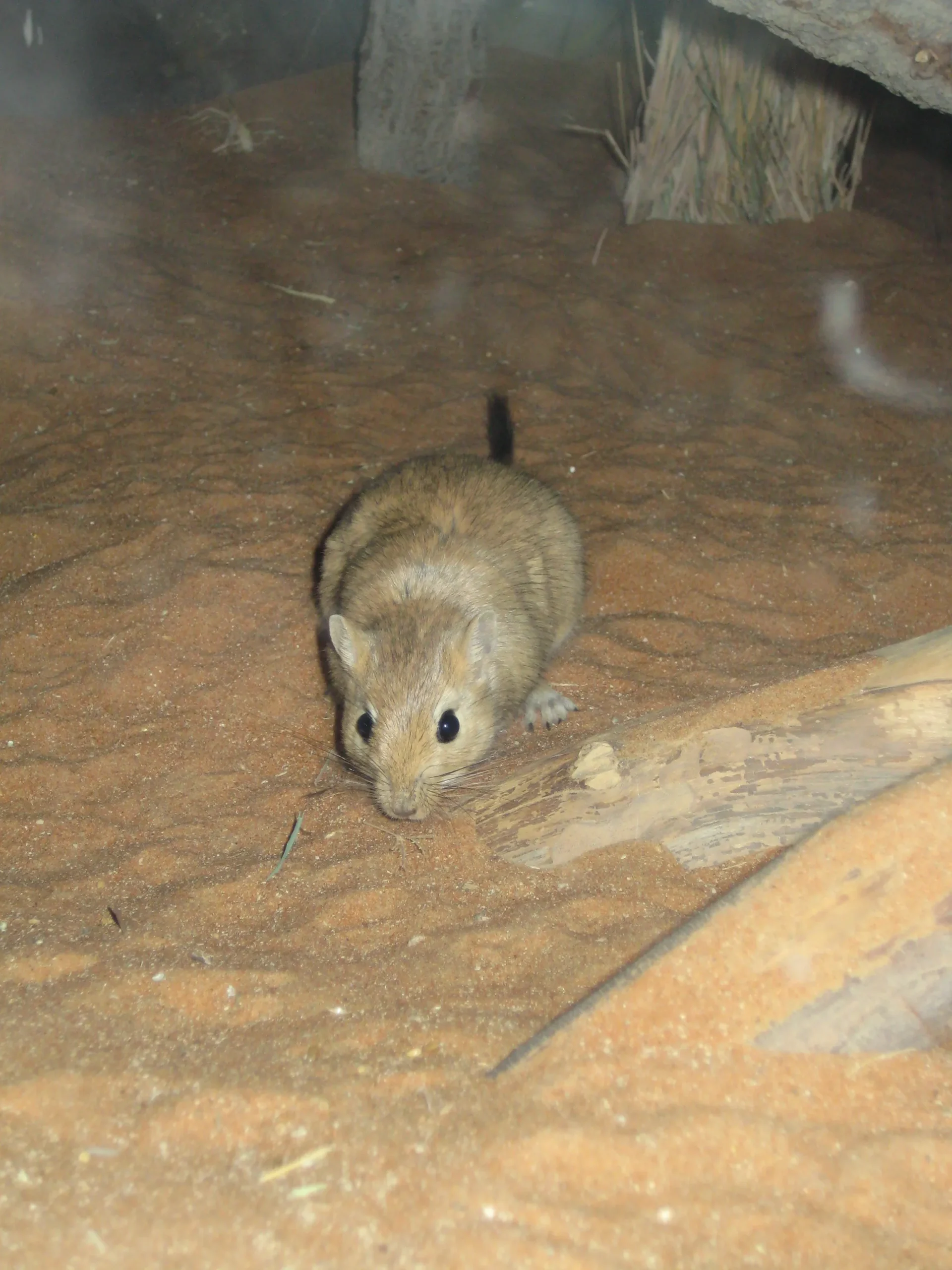
Hamster:
Commonly kept as pets; can adapt to living in captivity.
Gerbil:
Also kept as pets; adaptable to captivity but less common than hamsters.
Comparison:
Both hamsters and gerbils are found in captivity, but hamsters are more prevalent as pets.
Ecological Implications:
The presence of these species in human-inhabited areas may impact local ecosystems and introduce potential ecological imbalances.
21. Behavior Toward Humans
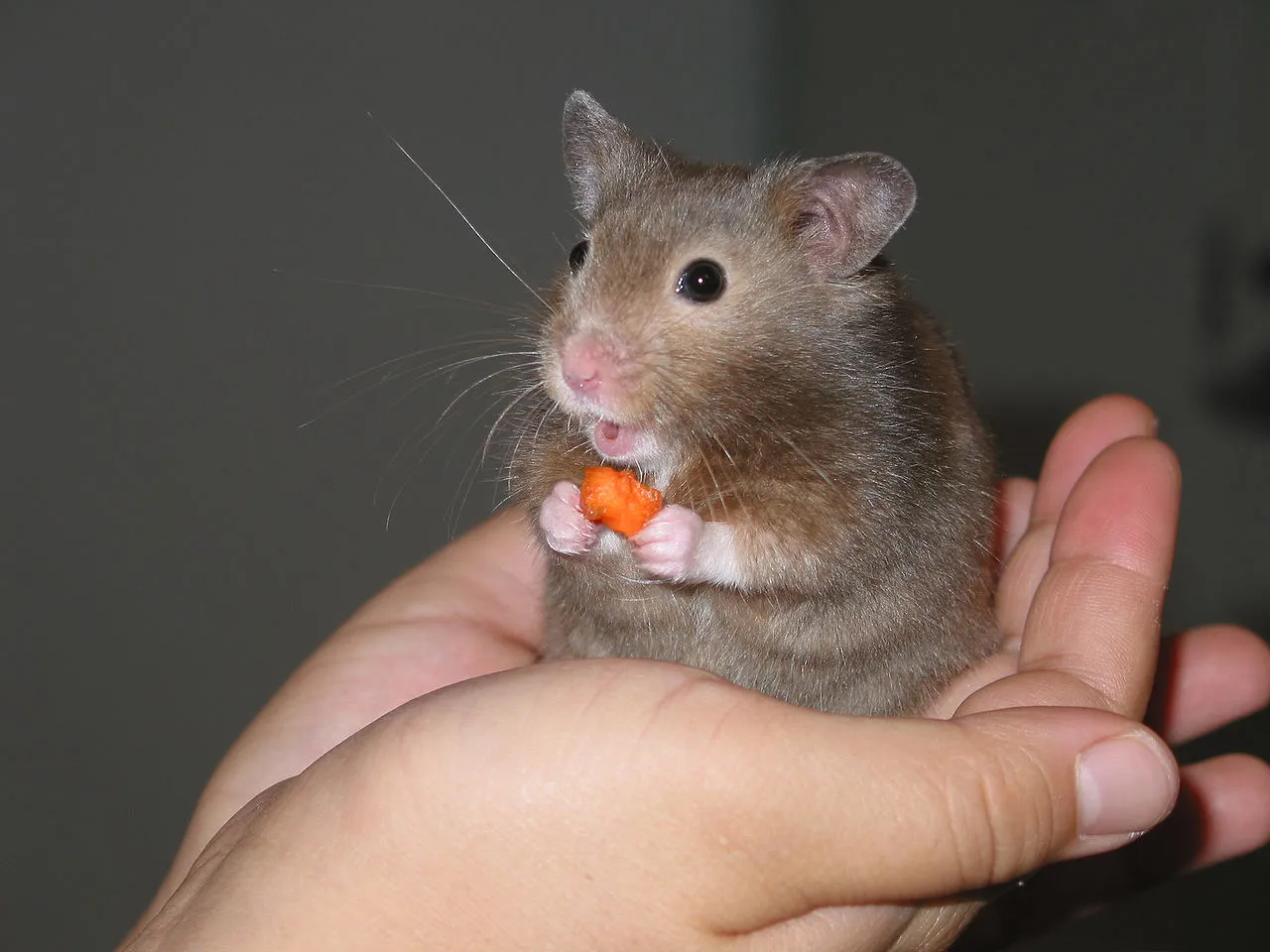
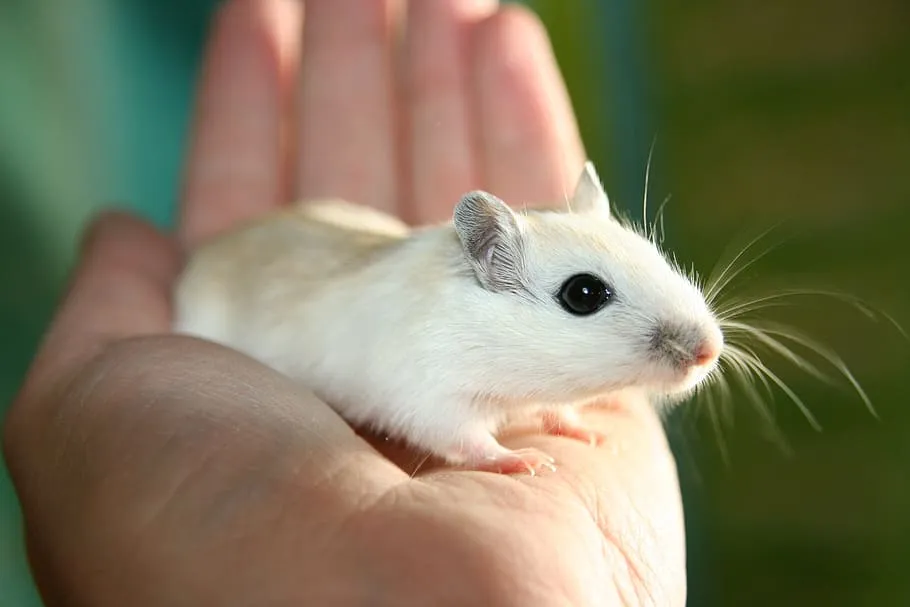
Hamster:
Varied; can be docile or territorial depending on individual temperament.
Gerbil:
Generally social and curious, exhibiting more positive interactions with humans.
Comparison:
Gerbils often display more sociable behavior toward humans compared to hamsters.
Ecological Implications:
Human interactions can influence the success of these species in captivity and potentially impact their behavior in the wild.
22. Danger Posed to Humans
Hamster:
Generally pose minimal danger to humans; may bite if provoked or mishandled.
Gerbil:
Low risk to humans; bites are uncommon, usually only when feeling threatened.
Comparison:
Both hamsters and gerbils present minimal danger, but gerbils are less prone to biting.
Ecological Implications:
Limited danger to humans allows for successful cohabitation in domestic settings.
23. Associated Precautions
Hamster:
Handling with care to avoid stress and potential bites; providing appropriate cage and environment.
Gerbil:
Similar precautions to hamsters, with additional attention to social needs for gerbils in captivity.
Comparison:
Both require careful handling and suitable living conditions, with gerbils benefiting from social interactions.
Ecological Implications:
Responsible care in captivity supports their well-being and can contribute to conservation awareness.
24. Conservation Status
Hamster:
Certain species may face threats or declining populations in the wild; conservation efforts vary by species.
Gerbil:
Generally not a focus of extensive conservation efforts; some species may be locally threatened.
Comparison:
Conservation status varies among different hamster and gerbil species.
Ecological Implications:
Understanding the conservation status of these species helps guide conservation initiatives and protect their natural habitats.
*Summary of Comparison
Taxonomy:
Hamsters: Order Rodentia, Family Cricetidae, Genus Mesocricetus, Species Varies.
Gerbils: Order Rodentia, Family Muridae, Subfamily Gerbillinae, Genus Gerbillus, Species Varies.
Appearance:
Hamsters: Stout, short tail, large cheek pouches, varied fur colors.
Gerbils: Sleek, long tail, pointed snout, agouti fur coloration.
Size:
Hamsters: Typically 5 to 7 inches (excluding tail).
Gerbils: Generally smaller, around 4 to 6 inches (excluding tail).
Weight:
Hamsters: 4 to 7 ounces.
Gerbils: 2 to 4 ounces.
Dentition and Bite Force (PSI):
Hamsters: Incisors continuously grow, moderate bite force.
Gerbils: Continuously growing incisors, relatively lower bite force.
Physical Offensive Advantages:
Hamsters: Strong cheek pouches.
Gerbils: Sharp claws, agile limbs for digging.
Physical Defensive Advantages:
Hamsters: Curl into a ball, use cheek pouches for protection.
Gerbils: Quick and agile movements, adept at escaping.
Speed:
Hamsters: Around 4 to 5 mph.
Gerbils: Up to 10 mph.
Agility:
Hamsters: Agile climbers and burrowers.
Gerbils: Exceptionally agile, especially in burrows.
Senses:
Hamsters: Well-developed smell and hearing, poor eyesight.
Gerbils: Acute hearing, keen smell, adapted to low light.
Overall Physical Capacity:
Hamsters: Adaptable climbers and burrowers.
Gerbils: Specialized diggers, swift agility.
Habitat Preference(s) and Geographic Region:
Hamsters: Varied habitats including grasslands and deserts.
Gerbils: Arid regions, sandy deserts.
Tracks:
Hamsters: Four toes on front and five on hind feet.
Gerbils: Four toes on both front and hind feet.
Lifespan:
Hamsters: 2 to 3 years in captivity.
Gerbils: 3 to 4 years in captivity.
Mode of Feeding:
Hamsters: Omnivores, seeds, fruits, insects.
Gerbils: Omnivores, seeds, grains, some insects.
Intelligence:
Hamsters: Limited problem-solving, instinctive.
Gerbils: Higher problem-solving skills, social intelligence.
Social Behavior:
Hamsters: Mostly solitary, aggressive.
Gerbils: Highly social, live in groups.
Mode of Reproduction:
Hamsters: Simple mating, gestation around 15 to 20 days.
Gerbils: Complex reproductive behaviors, gestation around 24 days.
Parental Behavior:
Hamsters: Limited parental care.
Gerbils: Cooperative care from both parents.
Proximity to Human-Inhabited Areas:
Both kept as pets, adaptable to captivity.
Behavior Toward Humans:
Hamsters: Varied, can be docile or territorial.
Gerbils: Generally more sociable and curious.
Danger Posed to Humans:
Both pose minimal danger, with gerbils less prone to biting.
Associated Precautions:
Handling with care, providing suitable living conditions.
Conservation Status:
Hamsters: Varies by species, some face threats.
Gerbils: Generally not a major focus, some species locally threatened.
Conclusion
I. Similarities
Both hamsters and gerbils are rodents with adaptations for burrowing and omnivorous diets.
They share common threats such as predation and habitat loss.
II. Differences
Gerbils are generally more social, with cooperative breeding and longer gestation periods.
Hamsters, while exhibiting diverse species-specific traits, are often more solitary in nature.


